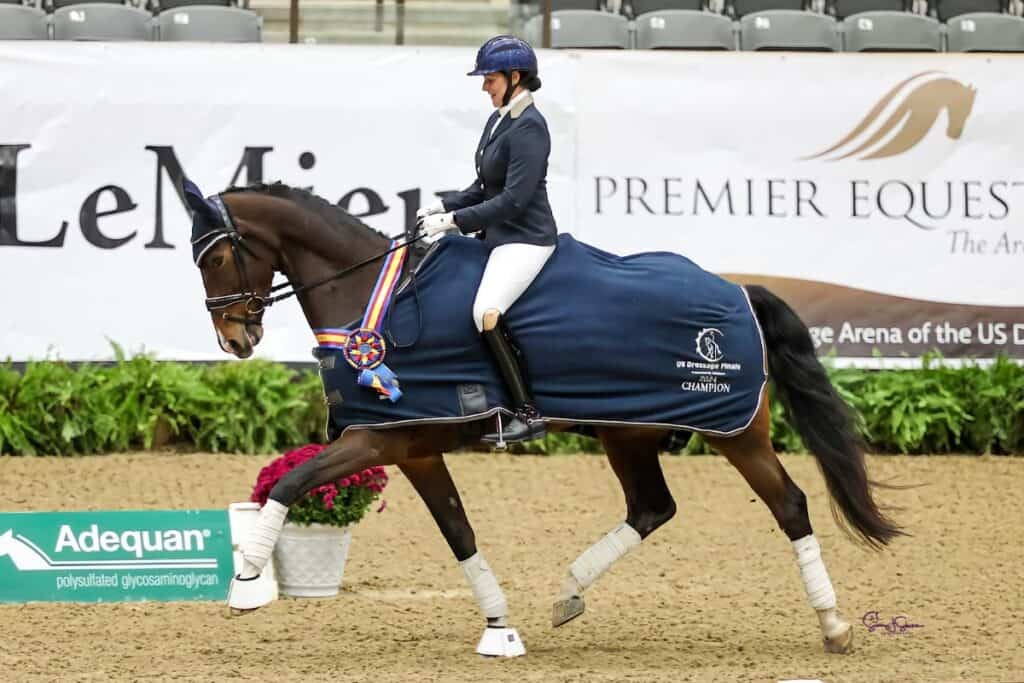Young horses greatly benefit from time under saddle outside the ring. Hacking diversifies their routine, exposes them to new environments and stimuli, and improves fitness. At Iron Spring Farm, hacking is part of each young horse’s lifestyle. Quinnten Alston, sales manager at ISF, shares how we introduce our youngsters to hacking.
What skill set does a young horse need before he can be safely hacked?
The horse should be started under saddle and confident with a rider on his back. We like our horses to walk, trot, and canter comfortably and confidently before introducing them to hacking. This includes being able to steer and stop.
How does ISF introduce a young horse to hacking?
The young horses go out on their first hack with a confident and secure older horse as a hacking buddy. This way, they have someone they can follow, which builds confidence. If a horse is nervous, we may have a ground person go along, either via a lead rope or just there for support.
How many horses go out together?
I think it is best to start with two horses. Smaller numbers reduce the excitement factor. Once everyone is confidently hacking, we can start adding additional horses.
Besides helmets and gloves, what other safety equipment does ISF use for hacking?
Neck straps are great for added security. During hunting season, we also wear orange vests for safety.
How often and for how long are the youngsters hacked each week?
Our young horses are hacked one to two times per week, approximately 30-45 minutes each session.
What are the best practices for safely hacking young horses?
Know your horses and what conditions set them up best for success. For each horse we ask: is it best to hack them at the beginning, middle or end of the week? Do they prefer a particular hacking buddy? Do they need a few laps around the ring before they go out for their hack?
You also want to know your environment–the who, what, where, and when of what is happening on any given day you might be hacking. Consult with your trainer or barn team to ensure everyone is on the same page.
What terrain conditions are best for young horses?
We do not hack our horses during storms or rain, or if the ground is very wet, which can cause lost shoes, slipping, or even falling. Flat, open surfaces are great for young horses to do trot or canter sets. This helps them learn how to go forward off the leg and open up their bodies. Hills are great for young horses to build strength and get them using different parts of their body. At ISF, we use hacking to break up the monotony of ring work, so we try to keep it fun for the horses and less demanding.
Working outside the arena is a wonderful way for horses and riders to connect with each other and build rapport. Be sure to ask your trainer the best way for you to introduce hacking to your horse.
Disclaimer:
All content provided by Iron Spring Farm is general and for informational purposes only. Content may also not constitute the most up to date information. Nothing in this content is intended to constitute veterinarian advice or to serve as a substitute for consultation with a veterinarian. Always seek the advice of your veterinarian or other qualified provider with any questions that you may have about the treatment and care of your horse.
Any reliance that you place on the information provided is strictly at your own risk and Iron Spring Farm, its officers, employees, representatives, and agents, hereby disclaim any and all liability to any party for any direct, indirect, implied, punitive, special, incidental, consequential or other damages arising directly or indirectly from access to or use of any content provided to the maximum extent permitted by law.










